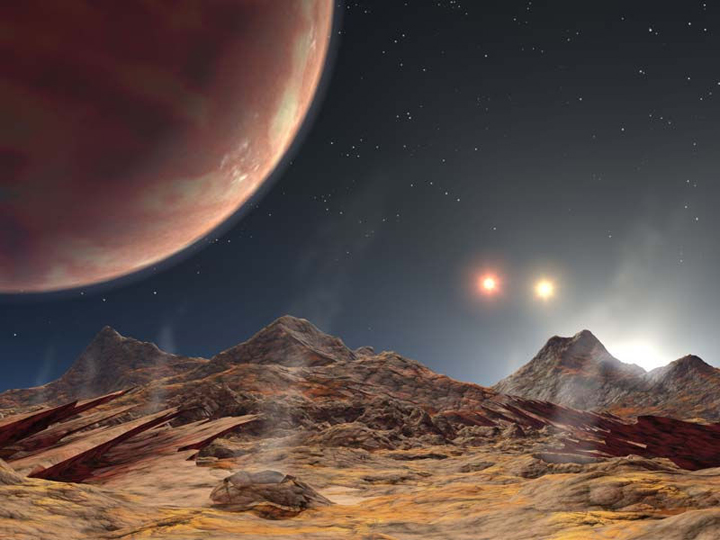Imagine waking up to a beautiful sunrise — with three suns brightening the sky. If you could live on KELT-4Ab, this would be your morning.

Scientists have found a triple-star system 685 light-years from Earth as well as a rarity: a planet in a stable orbit within it.
READ MORE: Mysterious ‘alien’ star gets even stranger
Multiple star systems are actually quite common in our universe, with estimates that about half of all stars are part of one. But finding a planet in such a system is rare.
Astronomers are always looking for exoplanets, or planets orbiting other stars. One of the methods in which they do this is by observing a star and seeing if its light dims. If it does, this could be an indication that a planet is crossing, or transiting, the star.
The Kilodegree Extremely Little Telescope (KELT) witnessed such a transit. KELT-A dimmed every few days. Then, astronomer Justin Crepp of the University of Notre Dame, was asked to further investigate using the Keck Telescope in Hawaii. While imaging, he made a surprising discovery.

Get daily National news
READ MORE: Star just 16 km across unleashes explosion brighter than Milky Way
The planet, KELT-4Ab, is about one-and-a-half times the size of the largest planet in our solar system, Jupiter. It orbits the main star in the system every three days.
However, the rest of the system is much larger: the other two stars orbit one another once every 30 years, and the main star once every 4,000 years.
Most of the exoplanets that have been discovered have been Jupiter-sized, as they are easier to spot. Astronomers once believed that most of these giant gas planets form at distant orbits from their host stars, just as Jupiter did in our solar system. However, in 1995, the first “hot Jupiter” — a gas giant in a relatively close orbit to its star — was discovered, forcing astronomers to reconsider their theories.
“We are trying to learn how planets get to their final resting places in orbits around stars,” said Crepp. “This discovery has implications for our understanding of planet formation and evolution.”
Follow @NebulousNikki



Comments